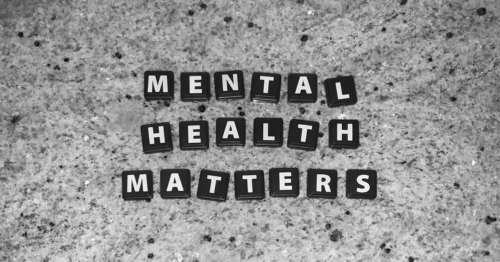
Table of Contents
The History of Hysteria and Its Link to Mental Health

Written By: Ashley Laderer

Clinically Reviewed By: Dr. Don Gasparini
March 3, 2023
7 min.
Hysteria has been a widespread phenomenon in women since ancient Egypt. Learn more about the history of hysteria and its evolution through the years.
Learn more about our Clinical Review Process
Table of Contents
Did you know there used to be a condition that medical professionals used to essentially blame on simply having a uterus –– and in many cases, the “treatment” was sex and orgasms?
Enter: hysteria, an old diagnosis involving a variety of physical and mental health symptoms ranging from emotional outbursts to amnesia to seizures to paralysis. For a long time, it was only thought to affect women. Men were quick to label women as “hysterical” if they exhibited anything out of the norm regarding their behavior, mental health, or physical symptoms.
Here’s what you need to know about what “hysteria” is, the history of hysteria, and modern iterations of what used to be defined as hysteria.
What is hysteria?
The idea of hysteria has been around for a long time. Throughout that time, as different physicians worldwide weighed in, many different definitions and symptoms arose. Hysteria, in a way, became an umbrella diagnosis for various symptoms, and “hysterical” became a way to describe a woman who was viewed as too emotional or dramatic.
Over time, various symptoms associated with female hysteria were:
- Amnesia
- Blindness
- Dizziness
- Emotional outbursts
- Fainting
- Fatigue
- Hallucinations
- Histrionic (AKA dramatic) Behavior
- Loss of various sensations
- Muscle spasms
- Muscle weakness or loss of muscle control
- Paralysis
- Seizures
- Trouble swallowing
- Various pains
Join the Charlie Health Library
Get mental health updates, research, insights, and resources directly to your inbox.
You can unsubscribe anytime.
What is the history of hysteria?
The concept of hysteria dates back to Ancient Egyptian times, around 1900 BC, linking hysterical disorders to the spontaneous movement of the uterus within a woman’s body. Their treatment method involved exposing the woman to different smells –– for example, putting an unpleasant smell near their mouth and nose and a more pleasant scent near the vagina, or vice versa. They believed this could help change the uterus's position and return it to the correct position within the body.
The Ancient Greeks took a different approach to understanding and treating hysteria. Their methods and logic were based on Greek mythology, linking it to women not having sex with men and, thus, not having orgasms. Greek philosopher Plato referred to the uterus as being “sad” when it wasn’t having sex and ultimately giving birth. So, unsurprisingly, their idea of hysteria treatment was sex.
Aristotle, another philosopher, and Hippocrates, a physician, shared this view, and in the 5th century BC, Hippocrates was the first person to use the word hysteria to describe the phenomenon. The term hysteria is derived from “hystera,” the root word for uterus in Greek.
Similar to the ancient Egyptians, Hippocrates associated hysteria with abnormal uterus activity within the body. He went a step further, saying that when a woman isn’t having sex, poisonous bodily fluid is stuck inside the body that isn’t being correctly released. He also believed that the uterus of a woman who isn’t having sex could cause toxic fumes to travel around the body, causing various symptoms of hysteria. Treatment involved sex (of course, within marriage) and the utilization of different smells placed near the nose and vagina, similar to what the ancient Egyptians were doing.
Newer theories surrounding female hysteria occurred in the 1600s, when Thomas Willis, an English doctor who was a pioneer in anatomy, suggested that hysteria was of cerebral (brain) origin –– and not due to the uterus. However, most continued attributing hysteria to a woman’s uterus and sex life (or lack thereof).
Further developments occurred during the Victorian Era. In the late 1800s, Jean-Martin Charcot, often referred to as the French father of neurology, was interested in researching female hysteria in a more modern and scientific way. He, too, believed hysteria was not linked to the uterus, instead saying it’s related to the nervous system. He noted that men could experience hysteria, as well.
One of Jean-Martin Charcot’s students was Sigmund Freud, a pioneer in modern psychology. He researched the psychological aspects of hysteria –– even male hysteria. He coined the term hysterical conversion, which referred to how unpleasant memories (read: trauma) could manifest themselves or convert into physical symptoms. He worked alongside Austrian physician Josef Breuer to further research hysteria.
One of the most famous and monumental case studies surrounding hysteria is that of a female patient named Anna O. Through hypnotizing her and getting her to open up and talk about painful emotions and events that triggered her hysteria, Breuer was able to help reduce the woman’s symptoms. Anna O. called this her “talking cure.” All of this research and work by Freud and Breuer ultimately helped give birth to psychoanalytic theory, which ties into modern-day “talk therapy.”
While strides were made in the right direction with psychoanalytic theory and hysteria, the female-genital ties still ran deep. In the late 1800s and early 1900s, pelvic massage was still a recommended treatment. During a pelvic massage, a physician or midwife would stimulate a woman’s genitals with their fingers to make them have what they called a hysterical paroxysm –– AKA an orgasm. In later years, medical vibrators were also used for the same purpose.
Is there “hysteria” today?
Thankfully, today hysteria is a defunct diagnosis. In 1980, “hysterical neurosis” was finally officially removed from the Diagnostic and Statistical Manual of Mental Disorders by the American Psychiatric Association. Instead, a modern diagnosis of conversion disorder was included. One of the best parts? No mention of a uterus being the root cause.
Given that the array of symptoms over the years that were associated with hysteria was so broad, various modern mental health conditions can be linked to the symptoms.

Here are a few conditions that are much more understood today, which can affect both men and women, and have legitimate treatments –– no pelvic massages necessary.
Conversion disorder
Conversion disorder is also known as functional neurological symptom disorder. It occurs when someone has various unexplained neurological symptoms that don’t have a medical cause. Often it is linked to emotional trauma, significant stressors, and mental health conditions.
Some symptoms of this include:
- Seizures (not related to epilepsy)
- Disruptions to the senses (sight, smell, hearing, taste, and touch)
- Fatigue
- Unexplained pains and muscle tension
- Muscle spasms, tremors, or twitches
- Weak muscles or paralysis of muscles
- Dizziness
- Fainting
- Difficulty swallowing
Interestingly, in many cases of conversion disorder, the person is not mentally distressed or too worried about these symptoms.
Do you need more support with
your mental health?
Charlie Health can help.
Somatic symptom disorder
Another related diagnosis is somatic symptom disorder. People with this disorder have a physical symptom or multiple symptoms that they can’t stop thinking about, causing extreme distress. Symptoms vary from person to person, but some examples are shortness of breath, fatigue, pain, or weakness. In many cases, these symptoms are not related to an actual medical condition. The person’s response is considered disproportionate when the symptoms are linked to a mental health condition. Some mental signs include:
- Extreme worry about the symptoms
- Being afraid that the symptoms are dangerous and indicate a serious condition
- Not trusting past medical evaluations
- Checking repeatedly for body abnormalities or other symptoms
- Going to many doctors appointments but not getting peace of mind from them
Dissociative disorders
Other diagnoses linked to what was once called hysteria are dissociative disorders. Three types of dissociative disorders are:
- Dissociative amnesia: Someone with this dissociative disorder has trouble with their memory. It is different from simple forgetfulness. Instead, they can’t remember certain information about themselves, a specific event, or even a whole period –– especially if linked to trauma. The amnesia can be super brief, lasting for minutes, or more chronic, lasting for months.
- Dissociative identity disorder: This is the current term for multiple personality disorder. Someone with this condition has multiple distinct identities (at least two) that they switch between. They may also have dissociative amnesia and gaps in memory. This dissociative disorder is typically linked to trauma, and it causes someone to have trouble functioning.
- Depersonalization-derealization disorder: Someone who experiences DPDR experiences derealization, which means they feel detached from their surroundings or that their surroundings aren’t real, and depersonalization, which means they feel disconnected from themself. This can be very distressing.
How was hysteria harmful to women?
The diagnosis of hysteria, whether as a physical condition or mental illness, was harmful to women. Many women may have been wrongfully labeled as hysterical for simply behaving out of line with what men wanted them to act. Not to mention, women who did experience a physical symptom such as paralysis or blindness would have to engage in completely unrelated treatments (i.e. pelvic massages) that likely did not help their situation.
Hysteria is a very early instance of medical bias and sexism by society and doctors against women. Imagine going to the doctor with a problem and them telling you that you just needed to get married and have sex. Women who had genuine symptoms couldn’t get the help or treatment they needed.
Sound familiar? Hysteria is a prime example of women not being taken seriously as patients, which unfortunately still happens a lot today, whether regarding physical or mental illness. Although we’ve made considerable strides in the medical and mental health fields, gender bias is still very much a thing in this day and age. Women are unfair victims of medical gaslighting, where physicians may dismiss their concerns and treat them differently than a male patient.
Hopefully, as time goes on, medical gaslighting will become increasingly rare, and all women can get the care they deserve.
How Charlie Health can help
Thankfully, mental health care has come a long way since the origins of “hysteria.” If you’re somebody who experiences conversion disorder, somatic symptom disorder, a dissociative disorder, or any other mental health struggle, Charlie Health may be able to help. Our virtual intensive outpatient program offers personalized services for teens, young adults, and families who deal with a wide variety of mental health concerns.
With professional care and a supportive community, you can start feeling better. Begin your healing journey with Charlie Health today.
References
https://www.ncbi.nlm.nih.gov/pmc/articles/PMC3480686/
https://dictionary.apa.org/hysteria
https://www.ncbi.nlm.nih.gov/pmc/articles/PMC4695775/
https://link.springer.com/chapter/10.1007/978-3-030-59181-6_2
https://onlinelibrary.wiley.com/doi/10.1111/joa.12273
https://www.karger.com/Article/Fulltext/481940
https://academic.oup.com/qjmed/article/98/6/465/1548146
https://www.tandfonline.com/doi/abs/10.1080/09540261.2020.1772731?journalCode=iirp20
https://my.clevelandclinic.org/health/diseases/17975-conversion-disorder
https://www.karger.com/Article/Abstract/360436





